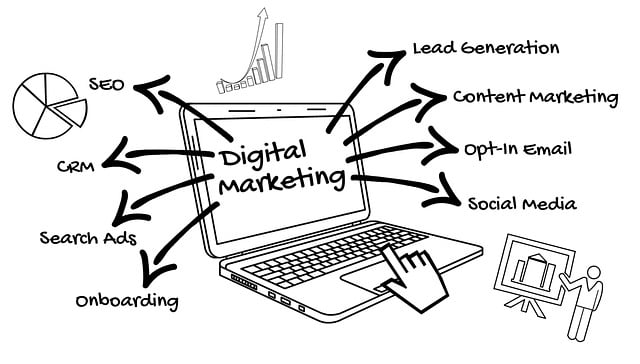In the dynamic CRE market, Artificial Intelligence (AI) leverages advanced machine learning algorithms and vast datasets to provide data-driven insights on occupancy rates and market trends. This enables accurate forecasting, strategic brand positioning, and competitive landscape analysis, helping investors and property managers maximize returns while minimizing risks. AI competitor brand positioning analysis combines internal records with external market intelligence like historical occupancy rates, demographic data, economic indicators, and social media sentiment to predict future trends. Proper data preparation ensures high-quality inputs for machine learning models, refining strategies tailored to specific niche markets, such as sustainable or tech-focused spaces, throughout the customer journey.
“The integration of Artificial Intelligence (AI) into commercial real estate (CRE) is transforming occupancy rate forecasting, offering a competitive edge in this data-driven sector. This article explores how AI algorithms can predict and optimize space utilization, enhancing decision-making for investors and developers. We delve into the process, from understanding AI’s role to gathering and analyzing vast datasets. Additionally, we uncover strategies for brand positioning, demonstrating how AI insights can differentiate CRE companies in a competitive market through innovative competitor brand positioning analysis.”
- Understanding AI in Commercial Real Estate: Unlocking Occupancy Rate Predictions
- The Power of Data: Gathering and Preparing for Accurate Forecasting
- Brand Positioning Strategies: Leveraging AI Insights for Competitive Advantage
Understanding AI in Commercial Real Estate: Unlocking Occupancy Rate Predictions

In the dynamic landscape of commercial real estate (CRE), Artificial Intelligence (AI) is no longer a futuristic concept but a game-changer. By leveraging machine learning algorithms and vast datasets, AI offers unprecedented insights into market trends, tenant behaviors, and property performance. This capability extends to one of the industry’s most critical metrics: occupancy rates. With AI, CRE professionals can move beyond intuitive guesses and traditional analysis, embracing data-driven predictions for optimal decision-making.
AI enables a comprehensive brand positioning analysis within the CRE sector by scrutinizing historical data, current market conditions, and future projections. It identifies patterns and correlations that human analysts might miss, enhancing accuracy in occupancy rate forecasting. This technology allows investors and property managers to anticipate demand shifts, assess competitive landscapes (AI competitors), and strategically position their portfolios. Through AI, understanding the complex web of factors influencing occupancy rates becomes more accessible, paving the way for informed strategies that maximize returns and minimize risks.
The Power of Data: Gathering and Preparing for Accurate Forecasting

In the realm of commercial real estate (CRE), accurate occupancy rate forecasting is a game-changer, enabling investors and property managers to make informed decisions. Artificial Intelligence (AI) has emerged as a powerful tool in this regard, offering an innovative approach to predict future trends. The key to AI’s success lies in data—the more comprehensive and well-prepared the dataset, the more reliable the forecasts.
Gathering relevant data involves a strategic blend of internal records and external market intelligence. This includes historical occupancy rates, demographic insights, economic indicators, and even social media sentiment analysis. By integrating these diverse sources, AI algorithms can identify intricate patterns and correlations. For instance, an AI competitor brand positioning analysis can reveal market trends, helping predict how different strategies might impact occupancy rates. Effective data preparation ensures that the information is cleaned, standardized, and structured, ready for advanced machine learning models to process and generate valuable insights.
Brand Positioning Strategies: Leveraging AI Insights for Competitive Advantage

In today’s digital era, leveraging Artificial Intelligence (AI) offers a significant edge in commercial real estate market dynamics, particularly when it comes to brand positioning and forecasting strategies. AI competitor brand positioning analysis plays a pivotal role in understanding market trends and consumer behaviors, allowing businesses to stay ahead of the curve. By utilizing machine learning algorithms, companies can gain valuable insights into occupancy rates, tenant preferences, and emerging patterns across different property types. This data-driven approach enables real estate brands to refine their positioning strategies, catering to specific niche markets with tailored offerings.
For instance, AI can help identify high-demand sectors, such as sustainable or tech-focused spaces, by analyzing historical occupancy data and current market trends. Armed with these insights, developers can strategically position their properties, attracting a competitive edge against rivals. This brand positioning isn’t just about marketing; it’s a strategic decision that influences the entire customer journey, from initial interest to long-term tenancy.
AI is transforming commercial real estate by enhancing occupancy rate forecasting through advanced data analysis. By leveraging machine learning algorithms, professionals can make more informed decisions, predict market trends, and gain a competitive edge using AI-driven insights. This not only optimizes portfolio performance but also allows for strategic brand positioning among rivals. Implementing AI in occupancy rate forecasting is no longer an option but a necessity for staying ahead in the market, ensuring successful investments, and maintaining a strong competitive brand positioning analysis.
